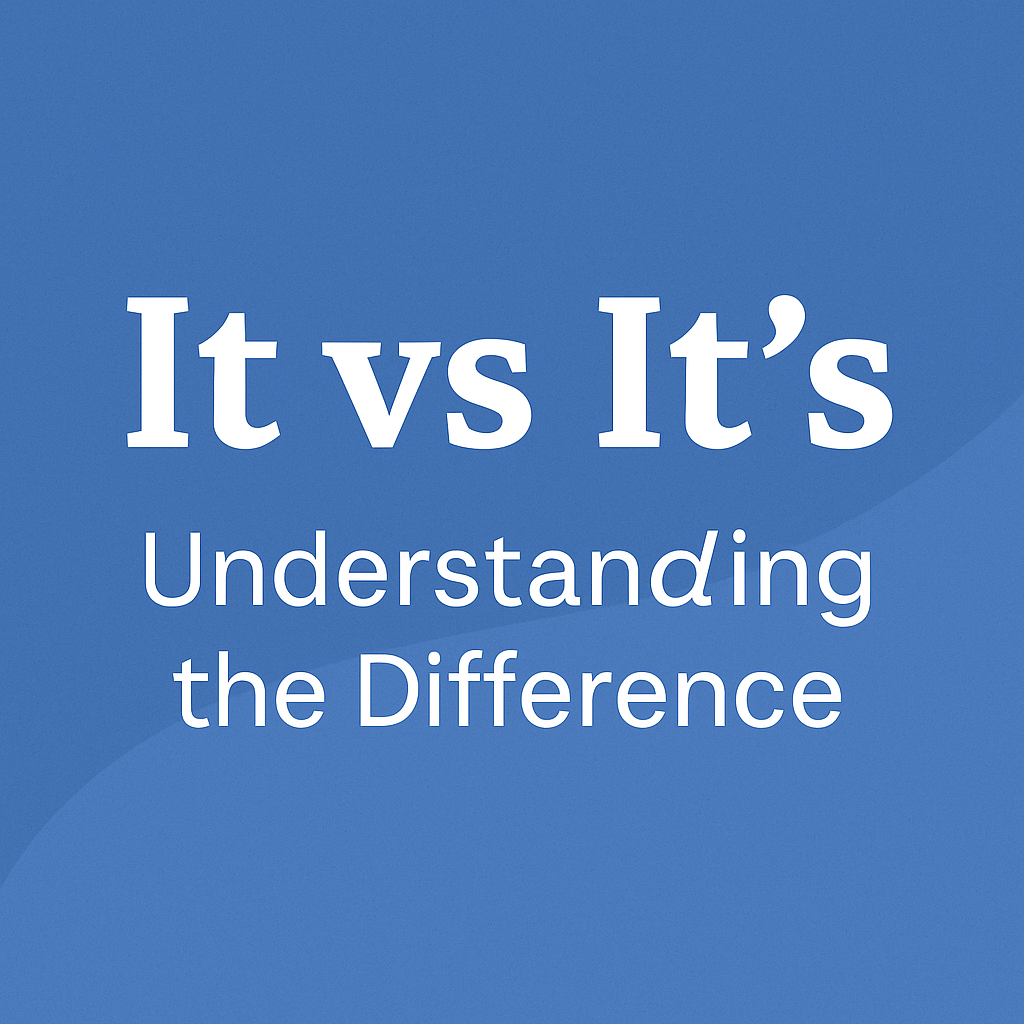It vs It’s

One of the most common grammar mix-ups in English is it vs it’s. Although these two words look nearly identical, they serve very different purposes. The confusion is understandable they’re just one apostrophe apart but misusing them can lead to unclear or unprofessional writing.
While “it” functions as a pronoun, “it’s” is a contraction of “it is” or “it has.” You’ll often see them misused in essays, emails, and even formal documents.
To help you avoid this frequent error, we’ll break down the difference between it vs it’s. You’ll learn key grammar rules, common mistakes, and memory tricks to help you get it right every time.
Grammatical Explanation of it vs it’s
To understand the grammar behind it vs it’s, start by recognizing their functions:
- “It” is a pronoun used to refer to a subject or object that’s already known or easily identified.
Example: The cat is hungry. It wants food. - In contrast, “it’s” is a contraction that shortens:
- It is
Example: It’s raining today. - It has
Example: It’s been a long week.
- It is
One important rule to remember: “It’s” is never used to show possession. Even though apostrophes usually indicate ownership, “its” (without the apostrophe) is the correct possessive form.
By paying attention to whether you’re using a noun substitute or a verb contraction, you’ll avoid one of the most common mistakes related to it vs it’s.
Real-Life Examples of it vs it’s
Here are practical examples to help you differentiate between it vs it’s in real sentences:
Correct usage of “It” (pronoun):
- The book is on the table. It belongs to Sarah.
- This cake is delicious. It tastes homemade.
Incorrect usage of “It”:
- It’s color is bright.
Correct: Its color is bright.
Correct usage of “It’s” (contraction):
- It’s a sunny day. (It is)
- It’s been a long journey. (It has)
Incorrect usage of “It’s”:
- The dog wagged it’s tail.
Correct: The dog wagged its tail.
Reading your sentence out loud can help if you can replace “it’s” with “it is” or “it has,” then you’re using it correctly. This small trick clears up a lot of it vs it’s confusion.
Common Mistakes
A major issue with it vs it’s is misusing the apostrophe to show possession. For example:
- The company changed it’s policy.
- The company changed its policy.
Why is the second version correct? Because “it’s” means “it is” or “it has,” not possession. On the other hand, “its” functions like “his” or “her” possessive, but without an apostrophe.
Another common mistake is forgetting the apostrophe in “it’s” when writing quickly.
- Its going to rain.
- It’s going to rain.
To avoid such errors, read the sentence aloud and see if “it is” or “it has” fits. If not, drop the apostrophe.
Memory Tips
These simple strategies will help you master it vs it’s:
- For “it’s”, try replacing it with “it is” or “it has.” If that makes sense, the contraction is correct.
Example: It’s late → It is late - For “its”, remember that possessive pronouns like “his,” “hers,” and “its” don’t use apostrophes.
- Visual mnemonic:
“It’s” is short for “it is” the apostrophe takes the place of the missing letter. - Another trick:
If you can say “it is” aloud without changing the meaning, you’re safe to use “it’s.”
For more grammatical tips in our blog;
Mastering these quick tips will make choosing between it vs it’s effortless, even in high-stakes writing.
Conclusion
Knowing the difference between it vs it’s is a small but powerful skill. “It” refers to something previously mentioned, while “it’s” is a contraction of “it is” or “it has.” Avoid confusion by checking your usage with simple substitution tricks.
Still unsure? Visit Grammarly’s guide on it vs it’s for extra support and examples.